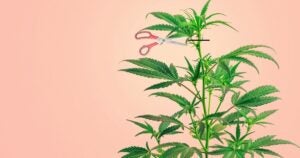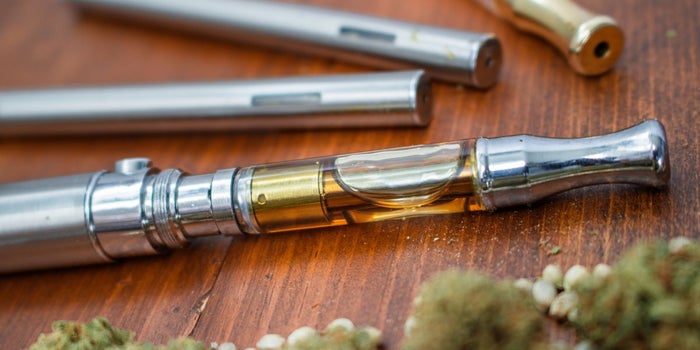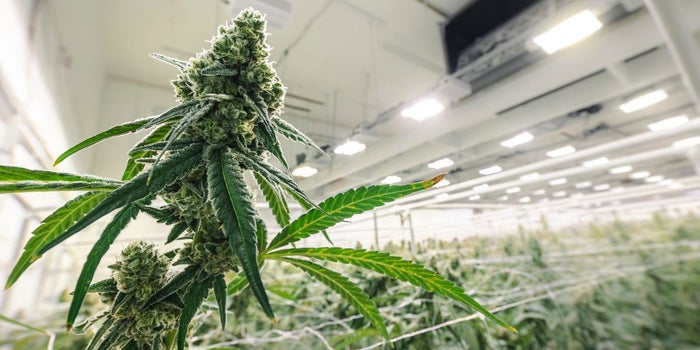Table of Contents
- What is Topping?
- Benefits of Topping Cannabis Plants
- When to Top Cannabis Plants
- How to Top Cannabis Plants: Step-by-Step Guide
- How Do I Know if Topping is Effective?
- Things To Look Out For
- What are The Alternatives to Topping
- What Are The Potential Risks and Drawbacks of Topping?
- Final Thoughts – Where to Buy Cannabis Seeds
- Frequently Asked Questions
Topping cannabis plants is a popular technique among growers seeking to maximize their yield and improve overall plant health. This high-impact method involves cutting the top of the plant to encourage lateral growth, resulting in a bushier, more robust plant. In this article, we’ll explore the benefits of topping cannabis plants, when and how to do it, and alternatives to consider. Let’s dive in!
What is Topping?
Topping is a type of high-stress training (HST) used on cannabis plants to promote horizontal growth and increase the number of flowering sites. This technique involves removing the top growth tip of the plant, which encourages the plant to develop multiple colas instead of one central cola. Topping can help achieve a more even canopy, ensuring that all plant parts receive equal light exposure and airflow, ultimately leading to higher yields.
Benefits of Topping Cannabis Plants
There are several advantages to topping your cannabis plants, including the following:
- Increased Yield
Topping increases the number of flowering sites on a plant, which leads to a higher yield. By removing the main growth tip, the plant redirects its energy to the side branches, allowing them to grow stronger and more capable of supporting heavy, resinous buds. - Better Light Penetration
Topped plants have a more even canopy, which allows light to penetrate deeper into the plant. This improved light distribution results in more efficient photosynthesis and overall healthier plants. - Improved Airflow
Topping cannabis plants creates a bushier structure with better airflow, reducing the risk of mould and mildew. Good air circulation is crucial for maintaining optimal humidity levels and preventing disease. - Easier Maintenance
Topped plants are easier to manage due to their shorter, bushier structure. This makes it simpler to move, prune, and maintain the plants throughout the growing process.
When to Top Cannabis Plants
Timing is crucial when it comes to topping your cannabis plants. Here’s what to consider:
- Ideal Plant Stage
It’s best to top your plants when they have at least 4-6 nodes, which is typically when they are in the vegetative stage. This allows the plant enough time to recover and grow multiple branches before entering the flowering stage. - Environmental Factors
Be mindful of your plant’s overall health and environmental conditions before topping. Ensure that the plants are well-nourished and the growing environment is optimal to help them recover from the stress of topping.
How to Top Cannabis Plants: Step-by-Step Guide
To top your cannabis plants, follow these simple steps:
- Sanitize Tools
Start by sanitizing your pruning shears or scissors to prevent the spread of disease or pests. A clean, sharp tool will also ensure a clean cut and minimize damage to the plant. - Select the Topping Site
Identify the top growth tip, also known as the apical meristem, which is the main vertical stem of the plant. Choose a spot just above the node where two side branches are growing, ideally when the plant has 4-6 nodes. - Make the Cut
Carefully cut the main stem just above the selected node, ensuring that you do not damage the surrounding branches. The cut should be clean and precise to minimize stress on the plant and promote faster healing. - Monitor Recovery
After topping, monitor your plant’s recovery and growth. The plant may show signs of stress initially, but you should see new growth from the side branches within a few days. Maintain optimal growing conditions to encourage a healthy recovery.

Identify the top growth tip and cut just above the selected node.
How Do I Know if Topping is Effective?
Determining the effectiveness of topping your cannabis plants is essential for ensuring optimal growth and yield. To evaluate if the topping is working, observe the development of new branches and a bushier plant structure after the initial topping. As the plant recovers from the stress, you should notice a more even canopy, better light distribution, and improved airflow throughout the plant. Additionally, the increase in flowering sites will lead to an enhanced yield of resinous buds. By monitoring these factors, you can assess the success of topping and make informed decisions about your plant’s future training and maintenance needs.
Things To Look Out For
- Use clean, sanitized, and sharp tools to minimize infection or damage.
- Be mindful of the plant’s age and health; avoid topping too early or on weak plants.
- Timing is critical; do not top during the flowering stage or under environmental stress.
- Monitor the plant closely after topping for signs of stress or slow recovery.
- Address potential issues promptly to ensure successful topping and optimal plant health.
What are The Alternatives to Topping
If you’re hesitant about topping or want to explore other methods, consider these alternatives:
1. FIM Technique
FIM, or “F*ck, I Missed,” is a less aggressive topping technique that involves pinching or cutting off around 75% of the apical meristem rather than completely removing it. This method encourages multiple branches to grow, similar to topping, but with less stress on the plant.
2. Low-Stress Training (LST)
LST involves gently bending and tying down the branches of your cannabis plants to encourage horizontal growth without cutting the plant. This method can help create an even canopy and increase light penetration without causing the same level of stress as a topping.
3. Super Cropping
Supercropping involves pinching and bending the plant’s main stem and branches to create a knuckle-like joint. This method promotes bushier growth and allows for better light penetration without removing the apical meristem.
What Are The Potential Risks and Drawbacks of Topping?
While topping can be highly beneficial, there are potential risks and drawbacks to consider:
- Topping is a high-stress training method, which can cause stress and slow down the plant’s growth if done incorrectly or at the wrong time.
- Over-topping can lead to weaker branches, unable to support the weight of the buds.
- Topping is not recommended for auto-flowering strains, as their short vegetative stage may not provide enough time for recovery.
Final Thoughts – Where to Buy Cannabis Seeds
Topping cannabis plants is a powerful technique for increasing yield, promoting even light distribution, and improving airflow. By careful timing and executing this high-stress training method, growers can enhance their plants’ performance and maximize their harvest. Discover the best method to suit your plants and the growing environment with alternatives like FIM, LST, and super cropping. To start your journey toward bountiful cannabis cultivation, visit Kootenay Botanicals and explore our selection of premium regular and feminized cannabis seeds from Exotic Genetix. Elevate your growing experience and unlock your plants’ full potential by choosing the right seeds from Kootenay Botanicals today!
Frequently Asked Questions
Is topping suitable for all cannabis strains?
Topping is generally suitable for most photoperiod strains; however, it is not recommended for auto-flowering strains due to their shorter vegetative stage.
How many times can I top my cannabis plants?
Depending on their health and growing conditions, you can top your plants multiple times. However, avoid over-topping, as it can weaken the branches and stunt growth.
Can I combine topping with other training methods?
Yes, topping can be combined with other training techniques like LST or super cropping to maximize the benefits of each method.
How long does it take for a topped plant to recover?
Recovery time varies depending on the plant’s health, growing conditions, and strain. Generally, a healthy plant
What is a Bud site?
A bud site, also known as a flowering site or node, is the location on a cannabis plant where buds form and develop. These sites are typically found at the intersection of a stem and a branch or along the main stem itself.



